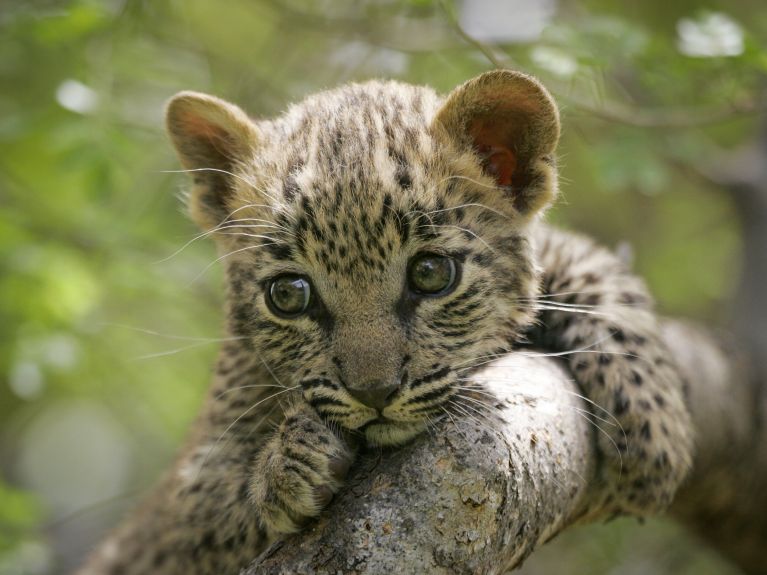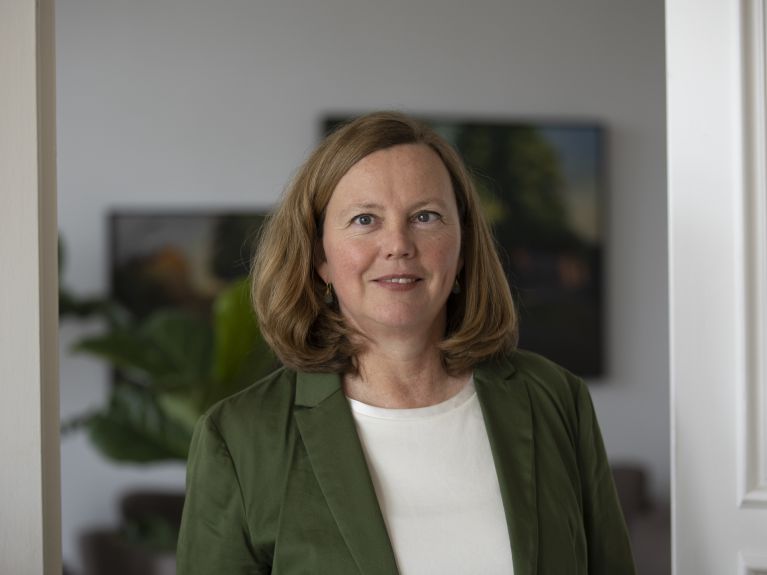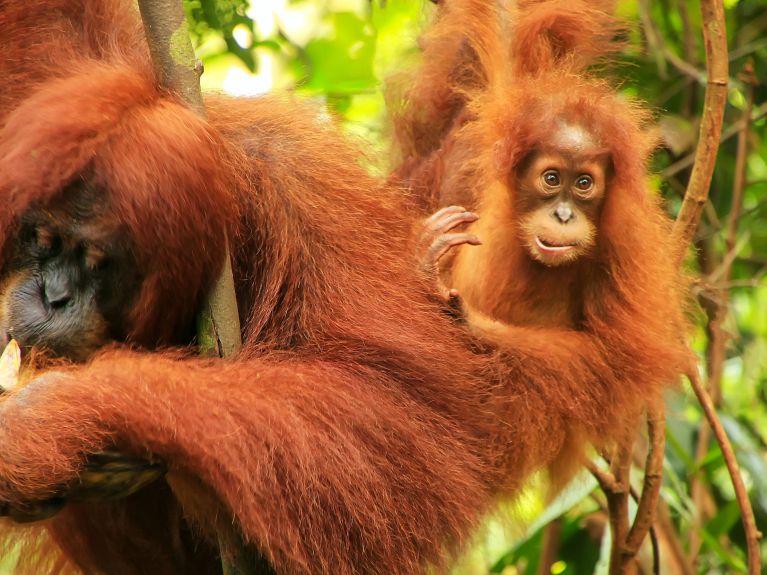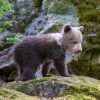"Nature conservation with the people"
Legacy Landscapes Fund – Stefanie Lang explains how the new fund aims to protect biodiversity all over the world

Stefanie Lang is head of the new Legacy Landscapes Fund, which aims to secure vital biodiversity for the planet. She talks about the importance of nature conservation and the huge task faced by the new fund.
Ms Lang, biodiversity used to be something, if you'll excuse the expression, for oddballs and nature freaks. How come that is no longer the case today?
Because it has become clear in the meantime that we need a rich biodiversity for our survival. It's our life insurance for the future. We need healthy nature to get a grip on climate change, for example through forests and peatlands. We need species like birds and insects for the world's food supply because they are important pollinators. This is no longer a niche topic. And that's important because we're facing a global crisis.

How serious is the situation?
It's dramatic. We're destroying nature at an incredible rate. The rate of species extinction is 100 times faster than it would be without human intervention. An animal or plant species becomes extinct once every eleven minutes; we're destroying woodland the size of a football field every four seconds. The coronavirus pandemic has made it abundantly clear that we can't go on like this.
What does biodiversity have to do with the pandemic?
Three quarters of all emerging infectious diseases, such as Zika or Ebola, are zoonoses – infectious diseases in which a virus jumps from an animal host to humans. According to the Intergovernmental Science-Policy Platform on Biodiversity and Ecosystem Services (IPBES), there are still 1.7 million unrecognized viruses in mammals and birds. The more humans penetrate into pristine nature and destroy intact ecosystems, the closer the contact between animals and humans becomes. And the more likely viruses will be transmitted to humans. Dozens of viruses with pandemic potential are said to still exist. So we face a much greater danger than we may realize. This makes it all the more important to stop encroaching on nature, clearing forests, exploiting ecosystems and destroying habitats.
Is it still possible to slow down this development?
Well-managed nature reserves are an important way of mitigating the loss of biodiversity. At present, however, there aren't enough of them. Only 16 percent of the Earth's land surface is under protection. Scientists recommend that 30 percent of global land should be protected or converted to sustainable use. And the protected areas that already exist are often unable to protect nature effectively.

Why is that?
A very important reason is a lack of money. 80 per cent of our biodiversity is concentrated on 20 per cent of the Earth's surface. Most of this is in developing countries, which often don't have the resources to carry out effective conservation; the issue competes with other important tasks like health protection, education or food safety. If we can provide long-term funding and planning security here, we can preserve much of the biodiversity for the planet and reach a new dimension in nature conservation.
Is that the mission of the Legacy Landscapes Fund?
The fund, which Federal Development Minister Gerd Müller presented to the public together with many partners from all over the world, aims to move in precisely that direction. Up to now, nature-conservation projects have rarely lasted more than a few years. Before you knew it, the funding period was already over. The Legacy Landscapes Fund is different: it will support at least 30 of the most important conservation areas in developing countries for at least 15 years. With a million dollars a year. This ensures that operations can function and such important tasks as wildlife monitoring can continue, even when overall circumstances are difficult – like now, with many parks losing tourist revenues due to the coronavirus.
Solutions that work for nature and people.
Nature conservation and economic development are quite often conflicting objectives. How can you make sure that humans don't miss out?
This point is very important to us. That's why the fund is called 'Landscapes' and doesn't use the word 'protected areas' in its name. We think more broadly, beyond the boundaries of protected areas. The fund aims to help develop long-term solutions that work for nature and people. And the solutions probably look different in each country. But our aspiration is to also benefit the people living near protected areas, to achieve a real balance between nature conservation and economic interests: for example through stable jobs, income from tourism or the sustainable use of natural resources. We would like to develop this together with the local partner organizations. That's why we need 15 years.
You've also got private donors involved. Why?
Effective nature conservation is a big job. No country, foundation or company can meet this enormous challenge alone. This way, a lot more money is raised, which – perhaps more importantly – the protected areas can actually access. Our overall target is $1 billion in foundation assets. This would make the Legacy Landscapes Fund one of the biggest conservation donors in the world.
Which areas are you promoting?
We're beginning with seven pilot areas: four in Africa, two in Asia and one in Latin America. They are Central Cardamom Mountains National Park in Cambodia, Gunung Leuser National Park in Indonesia, Odzala-Kokuoa National Park in the Republic of Congo, North Luangwa National Park in Zambia, Geonarezhou National Park in Zimbabwe, Iona National Park in Angola and Madidi National Park in Bolivia. We would like to start with them, provided they pass the very thorough examination we're about to put them through.

Why has Germany of all countries set up such a fund? Wouldn't it be much better to put it in the hands of an international organization?
Germany has taken on responsibility here; it's taken the lead. But to be successful in the long term, the fund will have to be able to build on a broad, international base – to grow into a global instrument. That's what we're working on. And we're currently in talks with several governments, but also with lots of foundations and companies. Already a number of major representatives, particularly from the English-speaking world, are on board; we hope to be able to include others soon.
Where do you hope the fund will be in five years?
We would like the Legacy Landscapes Fund to be well-established and fully operational. I also hope that, in addition to our purely promotional activities, we can also enrich the debate on viable concepts for nature conservation. We want to collect and pass on knowledge about the best solutions. If we succeed, we could make a major contribution to the conservation of global biodiversity.


